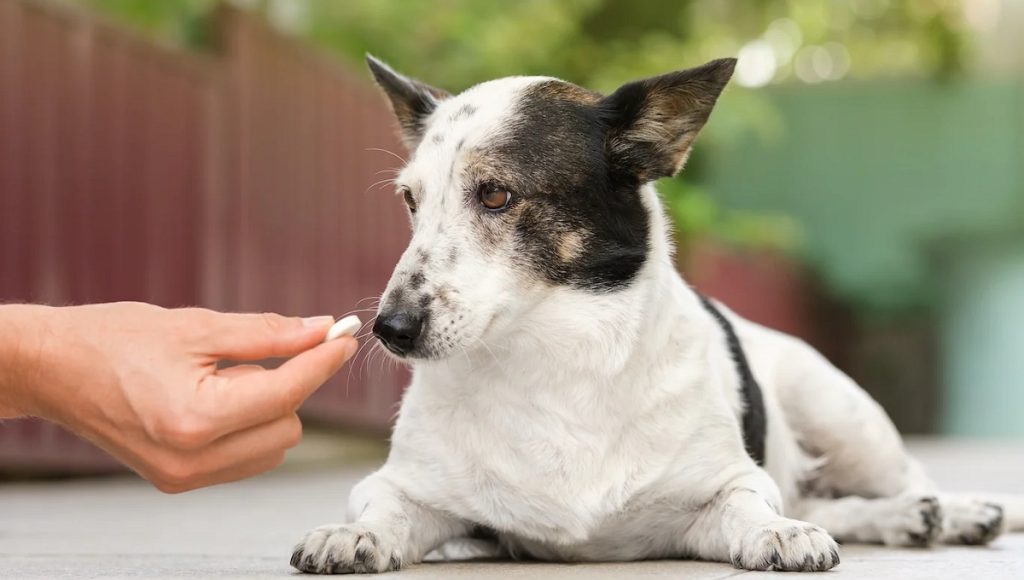Yes, dogs can overdose on Galliprant if they ingest amounts exceeding the prescribed dosage. Immediate veterinary care is crucial in such cases.
Galliprant (grapiprant) is a popular non-steroidal anti-inflammatory drug (NSAID) prescribed for dogs to ease the pain and inflammation associated with osteoarthritis.
Pet owners must administer this medication strictly according to the vet’s directions. An overdose can lead to serious complications, highlighting the importance of keeping medications out of pets’ reach.
Given the potential severity of an overdose, understanding the correct dosage and signs of toxicity can ensure the safe use of Galliprant for managing your dog’s joint discomfort.
Safety and vigilance in medication administration are key to maximizing the benefits of Galliprant while minimizing risks.

Understanding Galliprant
Galliprant serves as a beacon of hope for pet owners with dogs suffering from osteoarthritis. It’s crucial to understand what Galliprant is, how it functions, and its common uses. With the right knowledge, safeguarding your canine’s health becomes simpler.
What Is Galliprant?
Galliprant (Grapiprant) is a modern medication designed for easing pain and inflammation in dogs. Classified as a non-steroidal anti-inflammatory drug (NSAID), it’s specifically tailored for canine joint discomfort.
How Does Galliprant Work?
This drug targets a specific enzyme called EP4, which is responsible for sending pain and inflammation signals. By blocking EP4, Galliprant helps reduce pain without targeting other bodily functions, making it a targeted therapy for dogs in need.
Common Uses Of Galliprant
- Alleviating osteoarthritis pain: Galliprant shines in providing comfort for dogs with joint pain.
- Managing inflammation: It also plays a key role in reducing unwelcome inflammation in arthritic joints.
- Improving quality of life: Its overall purpose is to improve the day-to-day comfort of man’s best friend.
Potential Side Effects Of Galliprant
Galliprant is a medication for dogs with osteoarthritis. It reduces pain and inflammation. Like any drug, it has side effects. Knowing them helps keep dogs safe.
Overview Of Side Effects
Dogs on Galliprant sometimes experience unwanted effects. These vary from mild to severe. Side effects can impact health and behavior.
Common Side Effects In Dogs
Many dogs on Galliprant stay healthy. Some might show signs of discomfort. Here is a list of common side effects:
- Upset stomach: Dogs can feel sick. Watch for vomiting or changes in stool.
- Appetite changes: Dogs may eat less or refuse food.
- Itching: Dogs might scratch more.
- Behavior shifts: Look for less energy or weakness.
Report side effects to a vet. They can adjust the dose or switch medications. Always follow the vet’s advice for medication schedules.
Prevention And Safety Measures
Galliprant can be a life-changer for dogs with arthritis. Too much of it can harm them. That’s why prevention and safety are musts. Below are some key steps:
Safe Usage Guidelines
Sticking to recommended doses is crucial. A vet decides the dose based on weight and need. Here are some tips:
- Follow the vet’s prescription.
- Keep Galliprant away from other pets and children.
- Store medicine in a cool, dry place.
- Never increase doses without consulting your vet.
Monitoring Your Dog’s Response To Galliprant
Watching your dog’s reaction to the medication is important. Things to look for:
| Sign | Action |
|---|---|
| Behavior change | Talk to the vet. |
| Appetite loss | Report it. |
| Vomiting or diarrhea | Seek immediate help. |
| Skin reactions | Inform the vet. |
Regular check-ups are important. They help the vet adjust doses or spot issues early. Always inform them about any odd signs.
Conclusion
While Galliprant is generally safe when administered as prescribed, overdosing can lead to potential adverse effects and should be avoided.
If you suspect that your dog has ingested an excessive amount of Galliprant or is showing signs of an overdose, it’s crucial to seek immediate veterinary attention to ensure your dog’s well-being and safety.